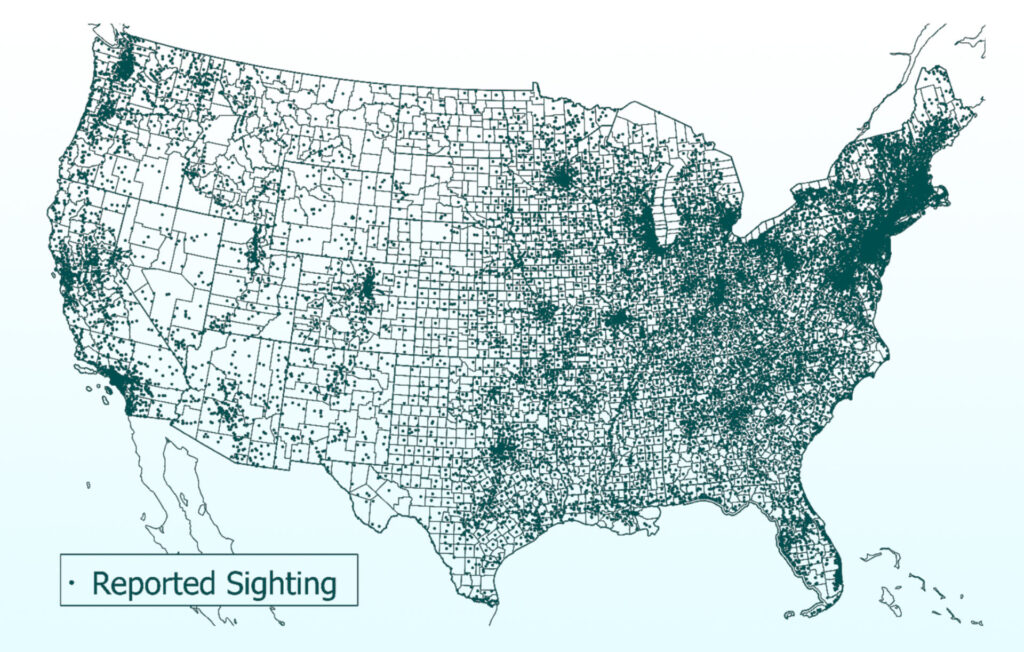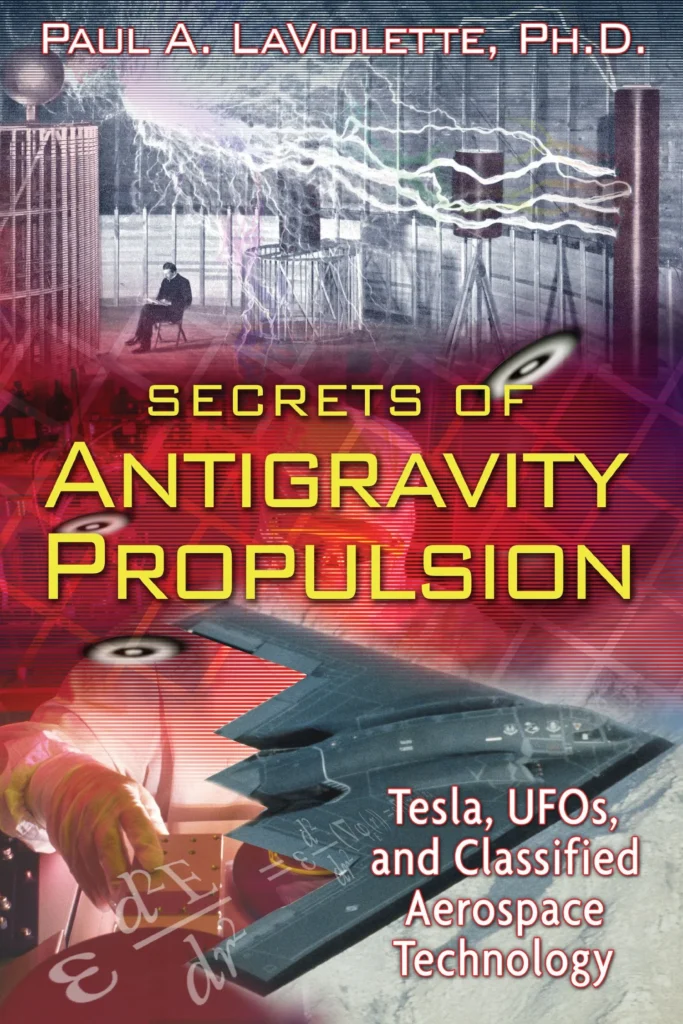Sightings of unidentified anomalous phenomena (UAP), formerly known as unidentified flying objects (UFOs), have been reported throughout history.
Given the potential security and safety risks they pose, as well as scientific curiosity, there is increasing interest in understanding what these sighting reports represent.
Scientists from the University of Utah and the U.S. Department of Defense approached this problem as an important one of the human experience and that can be examined through a geographical lens: what local factors may increase or decrease the number of sighting reports?
They used data from the National UFO Research Center, and included 98,000 total sighting reports over a 20-year period, from 2001 to 2020. For each county in the contiguous U.S., they analyzed two conditions: sky view potential, which refers to the area’s light pollution, cloud cover and tree canopy cover; and the potential for objects to be present in the sky, meaning the proximity to airports and military installations.
The majority of sightings were in western parts of the U.S. due to the region’s physical geography — lots of wide-open spaces and dark skies.
“The idea is that if you have a chance to see something, then it’s more likely that you’re going to see unexplained phenomena in the sky,” said Dr. Richard Medina, a geographer at the University of Utah.
“There’s more technology in the sky than ever before so the question is: What are people actually seeing?”
“It’s a tough question to answer, and it is an important one because any uncertainty can be a potential threat to national security.”
“Understanding the environmental context of these sightings will make it easier to find explanations for their occurrence and help identify truly anomalous objects that are a legitimate threat.”
Dr. Medina and his colleagues looked at the number of sightings per 10,000 people per county and identified significant clusters of low numbers of reports (cold spots) and high numbers of reports (hot spots).
There were far more sightings reported in the West and in the very Northeast, along some isolated areas. The cold spots were in the central plains and the Southeast.
All results except for cloud cover supported the general hypothesis that people will see things when there’s an opportunity.
“The West has a historical relationship to UAP — Area 51 in Nevada, Roswell in New Mexico and here in Utah we have Skinwalker Ranch in the Uinta Basin and military activity in the U.S. Army Dugway Proving Ground,” Dr. Medina said.
“Plus, there’s a robust outdoor community that recreates in public lands year-round. People are out and looking skyward.”

In July 2022, the U.S. Deputy Secretary of Defense, in coordination with the Director of National Intelligence, directed the establishment of the All-domain Anomaly Resolution Office (AARO) as the single authoritative UAP office to lead and synchronize a whole government approach to the issue.
Earlier UAP tracking efforts include Project BLUE BOOK, a U.S. Air Force-led project that investigated UFO sightings between 1947 and 1969.
BLUE BOOK’s most famous report is the Roswell, New Mexico, incident alleging that a flying saucer crashed in the desert town on July 8, 1947, and its alien occupants were recovered by government officials.
Many Roswell residents witnessed the unexplainable event, which may have led to the flurry of flying-saucer-sightings that swept the nation.
Silence from government officials led to wild speculation of otherworldly visitors and subsequent coverups.
Later, the U.S. Air Force disclosed that the incident was caused by a classified, multi-balloon project to detect Soviet nuclear tests.
Many UAP sightings have a natural explanation — the planet Venus is a regular culprit, for example.
The last few years have seen a boost in UAP reports, likely related to the exponential growth in spacecraft launches and orbiters, such as the Starlink satellite-train blazing across the night sky and the ubiquity of personal drones. The challenge is to parse which reports signal a real threat.
The authors are exploring whether there are temporal considerations for fluctuations in sightings, based on socio-cultural triggers.
For example, were there more reports after the congressional hearings in July of 2023 or after a Space X launch?
They’re also investigating whether sociocultural factors influence UAP sightings — is there a spike in reports after a show like X-Files gets popular? Are some cultures more likely to see UAPs because of their beliefs?
“The U.S. government — the military, intelligence and civil agencies — needs to understand what is in the operating domains to ensure the safety and security of the nation and its people,” said Sean Kirkpatrick, first director of the AARO and a physicist at the University of Georgia.
“Unknowns are unacceptable in this age of ubiquitous sensors and data availability. The scientific community has a responsibility to investigate and educate.”
Sources:
Published in the journal Scientific Reports; An environmental analysis of public UAP sightings and sky view potential.
doi: 10.1038/s41598-023-49527-x
Discover:

Secrets of Antigravity Propulsion:
Tesla, UFOs, and Classified Aerospace Technology
$11.99 (30% off)
A complete investigation of the development and suppression of antigravity and field propulsion technologies

